Bathroom Readers' Institute's Blog, page 153
December 19, 2013
3 Forgotten Christmas TV Specials
Some specials, like Rudolph the Red-Nosed Reindeer or How the Grinch Stole Christmas become beloved TV treasures that air every December for decades. Others…don’t.
A Muppet Family Christmas (1987)
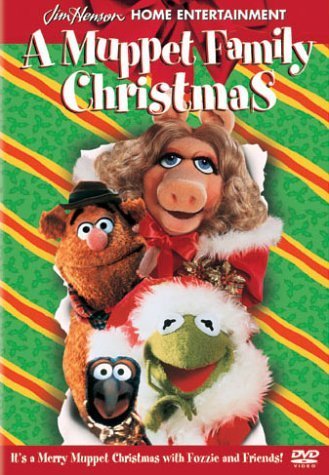 Kermit, Miss Piggy, and all the other Muppets have been featured in a lot of Christmas-themed movies and TV specials over the years, notably the 1992 big-screen The Muppet Christmas Carol, and a 1979 special co-hosted by John Denver (which spawned their hit rendition of “The 12 Days of Christmas.” This TV special doesn’t get much airplay anymore. The plot: Fozzie Bear surprises his mother by staying at her country home over the holidays, along with most of the other Muppets, and many of monsters and critters from Sesame Street. Over the course of Christmas Eve, the Swedish Chef tries to cook Big Bird, Miss Piggy gets stuck in a blizzard ,and Kermit discovers an underground cavern that leads him to the magical creatures from Fraggle Rock. Watch for the cameo from Muppets/Sesame Street/Fraggle Rock creator Jim Henson, who shows up at the end to wash all of his creations’ dirty dishes. Or just watch the whole thing:
Kermit, Miss Piggy, and all the other Muppets have been featured in a lot of Christmas-themed movies and TV specials over the years, notably the 1992 big-screen The Muppet Christmas Carol, and a 1979 special co-hosted by John Denver (which spawned their hit rendition of “The 12 Days of Christmas.” This TV special doesn’t get much airplay anymore. The plot: Fozzie Bear surprises his mother by staying at her country home over the holidays, along with most of the other Muppets, and many of monsters and critters from Sesame Street. Over the course of Christmas Eve, the Swedish Chef tries to cook Big Bird, Miss Piggy gets stuck in a blizzard ,and Kermit discovers an underground cavern that leads him to the magical creatures from Fraggle Rock. Watch for the cameo from Muppets/Sesame Street/Fraggle Rock creator Jim Henson, who shows up at the end to wash all of his creations’ dirty dishes. Or just watch the whole thing:
It’s Christmastime Again, Charlie Brown (1992)
A Charlie Brown Christmas (1965) is one of the most famous and critically acclaimed TV programs of all time (it won an Emmy and a Peabody Award), and it still airs to high ratings every year…unlike its sequel. It’s Christmastime Again, Charlie Brown debuted on home video, and was distributed as a holiday premium at Shell gas stations before it aired on CBS in late 1992. Like a lot of Peanuts specials, there isn’t much of a plot, instead focusing on Charlie Brown and his friends participating in holiday activities. Charlie Brown attempts to sell wreaths door-to-door (and fails, of course), Peppermint Patty frets over a Christmas-themed book report, and Snoopy works as a sidewalk Santa.
Frosty Returns (1992)
You’re probably familiar with the 1969 animated special based on the 1950 Gene Autry Christmas carol. But at the end of the song, Frosty says “he’ll be back again some day.” He kept his promise, and came back, in the form of a sequel to the TV special. Starring John Goodman as the voice of Frosty (subbing in for the deceased Jimmy Durante), the special follows the magical snowman as he takes on Mr. Twitchell (Brian Doyle-Murray) who’s bent on ridding the world of snow with an aerosol spray called “Summer Wheeze.” Mr. Twitchell wins over the town of Beansboro with the idea of an endless summer, until Frosty gives a passionate speech at a town carnival in defense of all things winter. Frosty is named “King of the Carnival,” and Mr. Twitchell is defeated, although Frosty isn’t a sore winner, so he takes the villain on a toboggan ride.
December 18, 2013
Impossible Questions About Music…Answers Revealed!
 Got your answers all figured out for our Impossible Questions of the week?
Let’s see how you did.
Got your answers all figured out for our Impossible Questions of the week?
Let’s see how you did.
What do these hit albums have in common: Boston’s Don’t Look Back, Frank Sinatra’s Strangers in the Night, the Beatles’ Help!, Nat “King” Cole’s Unforgettable…and the Baha Men’s Who Let the Dogs Out?
All five albums begin with a title track—a song with the same name as the album. While that’s very common, what’s interesting about these five examples is that the first line sung on each album is also the name of that song, and the album. In other words, the first track on Don’t Look Back is “Don’t Look Back” and the first words sung are “don’t look back.”
What do these albums have in common: With the Beatles (The Beatles), Silver Side Up (Nickelback), and Seventh Star (Black Sabbath)
All three were hit albums—but all were overshadowed on their initial release by national tragedy. Each hit stores on the same day as tragic events in American history. With the Beatles was released on November 22, 1963, the day President John F. Kennedy was assassinated. Silver Side Up came out on September 11, 2001. And Seventh Star became available on January 28, 1986, the same day as the Space Shuttle Challenger disaster.
What do Warren Zevon, Roxy Music, Willie Nelson, the Moody Blues, Joe Cocker, and the Cars have in common?
The Rock and Roll Hall of Fame announced its 2014 inductees this week and those acts…didn’t make the cut. Making their way in are Nirvana, KISS, Linda Ronstadt, Hall and Oates, Peter Gabriel, and Cat Stevens. Nirvana made it on its first time on the ballot (which comes 25 years after an artist’s first commercial recording). Peter Gabriel was inducted in 2010 as part of the progressive rock band Genesis. KISS has been denied enshrinement for years, but finally made it in via an online “fan vote.” Introduced last year, it’s how Rush, another critically-reviled band with a devoted fanbase, made it into the Rock Hall.
Want more impossible questions? Check out Uncle John’s Impossible Questions.
December 17, 2013
8 Quick Facts About “White Christmas”
Stuff you didn’t know about the most popular Christmas song of the 20th century.
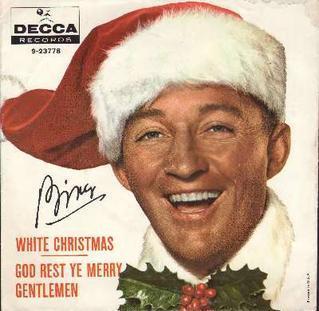 • Legendary songwriter Irving Berlin wrote the song from the point of view of a New Yorker (like himself) stuck in warm California for Christmas (as he had been). That sentiment was made explicitly clear by the song’s original first verse, which mentions “the sun is shining,” “the grass is green,” and things like palm trees and Beverly Hills.
• Legendary songwriter Irving Berlin wrote the song from the point of view of a New Yorker (like himself) stuck in warm California for Christmas (as he had been). That sentiment was made explicitly clear by the song’s original first verse, which mentions “the sun is shining,” “the grass is green,” and things like palm trees and Beverly Hills.
• “White Christmas” was picked to be included in the 1942 Bing Crosby movie Holiday Inn—both Crosby and his producer thought that the song wouldn’t have much worth outside of the movie with that verse. So it was dropped.
• Berlin copyrighted “White Christmas” in 1940, but rumors persist that he actually wrote and shopped it in 1938. If that were the case, it wouldn’t have been eligible to compete for Best Original Song at the Academy Awards. Berlin won the Oscar, which he presented to himself, an Oscars first.
• “White Christmas” spent 11 weeks at #1 in 1942. Before rock n’ roll became the dominant style of popular music, Bing Crosby was the most popular singer in the U.S. Today, he’s best remembered for “White Christmas,” but that song was his 29th #1 hit. To put that in perspective, the Beatles only had 20 chart-toppers.
• The song become an instant classic. In subsequent years, it remained so popular with radio listeners and record buyers that it re-entered the pop charts over and over again for decades. It was a hit single in every year, from 1942 to 1962 (except in 1952 for some reason), routinely reaching the top 10 and even making it back to #1 on two separate occasions.
• “White Christmas” wasn’t a hit single in England until 1977…the year Crosby died.
• Selling an estimated 50 million copies, “White Christmas” was the bestselling single of all time for more than 50 years…until Elton John’s “Candle in the Wind 1997” tribute to Princesss Diana.
• The version you hear on the radio today isn’t the one recorded for Holiday Inn. By 1947, the original masters were worn out from having to be pressed millions of times. So, in March 1947, Crosby re-recorded the song with the John Scott Trotter Orchestra, the backing group from the original version.
Impossible Questions: Music
 You’ll Never Guess the Answers To These Impossible Questions About Music!
You’ll Never Guess the Answers To These Impossible Questions About Music!
Think you know everything there is to know? See if you can answer these brain-benders…and come back tomorrow to see if you’re right.
1. What do these hit albums have in common: Boston’s Don’t Look Back, Frank Sinatra’s Strangers in the Night, the Beatles’ Help!, Nat “King” Cole’s Unforgettable…and the Baha Men’s Who Let the Dogs Out?
2. What do these albums have in common: With the Beatles (The Beatles), Silver Side Up (Nickelback), and Seventh Star (Black Sabbath)
3. What do Warren Zevon, Roxy Music, Willie Nelson, the Moody Blues, Joe Cocker, and the Cars have in common?
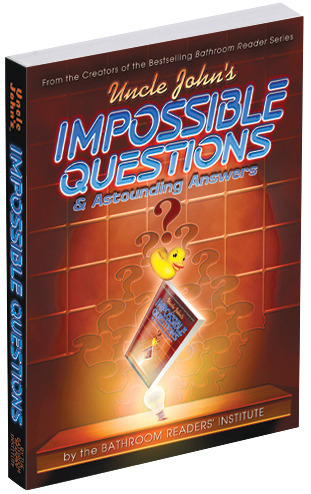 Want more impossible questions?
Want more impossible questions?
Check out
Uncle John’s Impossible Questions.
December 16, 2013
Who Will Have the Christmas #1 in the UK?
Every year, the UK goes a little mad as pop stars compete to see who will get the completely ceremonial honor of having the #1 song in the country on Christmas. Here’s a look at this cultural phenomenon, which has no real comparison in the U.S.
 In the 2003 Christmas-set romantic comedy Love, Actually, aging pop star Billy Mack (Bill Nighy) tries to revive his career by trying to get a Christmas #1 with a song called “Christmas is All Around,” a holiday-themed remake of the Troggs’ hit “Love is All Around.” Mack calls it a “festering turd of a record.” It’s a satirical look at the English pop cultural phenomenon of the music industry – and music buyers – guessing what song will be #1 on Christmas Day.
In the 2003 Christmas-set romantic comedy Love, Actually, aging pop star Billy Mack (Bill Nighy) tries to revive his career by trying to get a Christmas #1 with a song called “Christmas is All Around,” a holiday-themed remake of the Troggs’ hit “Love is All Around.” Mack calls it a “festering turd of a record.” It’s a satirical look at the English pop cultural phenomenon of the music industry – and music buyers – guessing what song will be #1 on Christmas Day.
The question of “who will be #1 on Christmas” has fascinated England since 1973. That year, two popular glam rock bands both released Christmas singles: Slade, with “Merry Xmas Everybody,” and Wizzard, with “I Wish It Could Be Christmas Everyday.” The media concocted a rivalry and prognosticated which song would top the charts, if either, by Christmas. The winner: Slade.
Since then, the buildup to #1 on Christmas is a big deal. Musicians record songs specifically to top the charts at Christmas—more often that not the Christmas #1 is a sentimental song, a Christmas song, a remake, or a novelty song. (In Love, Actually, the sentimental, Christmas-themed remake “Christmas is All Around” does in fact hit #1.)
St. Winifred’s School Choir, “There’s No One Quite Like Grandma.” This group of elementary school-age singers, accompanied by their teacher on guitar, had a string of unlikely hits in late 1979, culminating in the Christmas #1 of 1980 with a sweet song about how great grandmas are.
Band Aid, “Do They Know It’s Christmas?” Bob Geldof recruited more than 20 rock stars (George Michael, Bono, Phil Collins) to record a charity single to raise money for African famine relief. It sold 3.5 million copies, the second-best-selling single ever in England. It went to #1 in 1984; remakes topped the Christmas chart in 1989 and 2004.
Bob the Builder, “Can We Fix It?” A dance remix of the theme song to the stop-motion children’s TV show went to #1 in 2000.
Winners of The X Factor. In recent years, the first single from the winner of England’s version of TV talent show The X Factor has been released to much fanfare just in time for it to top the charts at Christmas. An X Factor winner had the Christmas #1 in 2005, 2006, 2007, 2008, and 2010. (Why not 2009? Read on.)
Rage Against the Machine, “Killing in the Name.” The Marxist-leaning American hard rock band had the Christmas #1 in 2009 with a song about police brutality it had recorded 17 years earlier. How? A DJ started a campaign on Facebook, urging people to buy the song to prevent another song from The X Factor from getting the top spot.
3 More Kinds of TV Shows That Have Disappeared From Television
When we ran a piece earlier this month about TV genres that have all but disappeared from the tube, you gave us some great suggestions for another look at some fading television institutions.
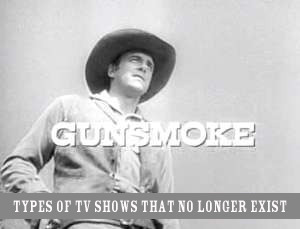 Westerns. Westerns were popular on radio, and when TV took hold in the 1950s, westerns hitched a ride. By 1959, 26 westerns were airing on the three TV networks. All those shows (such as Gunsmoke, Bonanza, Rawhide, and Wagon Train) were among the first times TV productions ventured out of small studios to shoot on location to create more cinematic programming. And with all of the undeveloped Old West-like expanses just outside of Hollywood at the time, it was a relatively cheap undertaking. By the late ’60s, too many westerns cannibalized demand, and their popularity led to higher production costs. Then in the early ’70s, CBS undertook a “rural purge,” clearing its schedule of anything rural themed, such as The Beverly Hillbillies, Hee Haw, and all of its westerns, including 20-season veteran Gunsmoke. A few attempts have been made to revive the western, (Dr. Quinn: Medicine Woman, Hell on Wheels, Deadwood) but its never mosied on back to its former heights.
Westerns. Westerns were popular on radio, and when TV took hold in the 1950s, westerns hitched a ride. By 1959, 26 westerns were airing on the three TV networks. All those shows (such as Gunsmoke, Bonanza, Rawhide, and Wagon Train) were among the first times TV productions ventured out of small studios to shoot on location to create more cinematic programming. And with all of the undeveloped Old West-like expanses just outside of Hollywood at the time, it was a relatively cheap undertaking. By the late ’60s, too many westerns cannibalized demand, and their popularity led to higher production costs. Then in the early ’70s, CBS undertook a “rural purge,” clearing its schedule of anything rural themed, such as The Beverly Hillbillies, Hee Haw, and all of its westerns, including 20-season veteran Gunsmoke. A few attempts have been made to revive the western, (Dr. Quinn: Medicine Woman, Hell on Wheels, Deadwood) but its never mosied on back to its former heights.
Anthologies. This format dominated early TV, because they were cheap to produce, and they were easy to produce. TV producers were still figuring out what made a good TV show in the 1950s, so many early broadcasts were presented like stage plays: a single set in a studio and little camera movement. Many episodes of anthologies like The U.S. Steel Hour and The Philco Television Playhouse originated as plays, or were written by playwrights, because the TV industry at the time was based in New York, which gave it access to Broadway’s talent pool. (It’s also what the audience wanted—the first TV set buyers in the 1940s and early ’50s were wealthier Americans who research showed like more refined entertainments, such as theater.) Into the ’60s, anthologies evolved into big-budget, filmed productions, particularly The Twilight Zone and The Outer Limits. But as TV found its way, the audience responded—by and large, it preferred sitcoms and dramas with regular characters and continuing stories. One notable anthology revival: NBC’s Amazing Stories (1985), cancelled after two seasons of middling ratings.
Local kids shows. From the late 1940s to the early 1970s, nearly every American city had its own local kid’s show. The format was pretty standard: a cowboy/clown/pirate/train engineer/mailman/ringmaster introduced games, contests, puppet shows, and cartoons. At the height of the era, there were more than 1,400 locally made kids’ shows nationwide—the shows were a cheap and easy way for stations to fill time in little-watched early-morning and late-afternoon hours. The advent of PBS’s all-educational children’s programming killed the cowboys and clowns. Concerned parents urged their kids to watch “educational” shows, such as Mr. Rogers’ Neighborhood, Sesame Street, and The Electric Company, instead.
December 13, 2013
“People Really Do Win on MTV”
Game shows give away cash and dining room tables. In the ‘80s and ‘90s, MTV gave away stuff like Jon Bon Jovi’s house.
Be in a Loverboy video!
 The ‘80s rock band Loverboy were one of the first big stars of the MTV era. In 1983, they joined up with the video channel for a contest that would allow the winner to be the video for their single “Queen of the Broken Hearts.” A viewer named Bridget Magnesi won the prize. She didn’t exactly get to star in the video—catch a glimpse of Magnesi at the 0:18 and 0:23 marks in the video. She’s the woman sitting behind the control panel.
The ‘80s rock band Loverboy were one of the first big stars of the MTV era. In 1983, they joined up with the video channel for a contest that would allow the winner to be the video for their single “Queen of the Broken Hearts.” A viewer named Bridget Magnesi won the prize. She didn’t exactly get to star in the video—catch a glimpse of Magnesi at the 0:18 and 0:23 marks in the video. She’s the woman sitting behind the control panel.
Win a pink house!
In 1984, MTV held the “Party House Sweepstakes.” Viewers sent in a postcard and if theirs was selected, they and 25 friends were flown to Bloomington, Indiana, for a house party hosted by John Cougar Mellencamp, who would play a live concert. And the winner got to keep the house, which had been painted pink, like in Mellencamp’s hit “Pink Houses.” Other prizes included a pink Jeep and a garage full of pink-colored Hawaiian Punch. MTV actually had to buy two houses in Bloomington for the promotion. The first cost a staggeringly low $20,000, which was because it was across the street from a toxic waste dump. A woman named Susan Miles won the house; she painted over the pink in 1991.
Make a Madonna video!
Madonna partnered with MTV in 1986 to allow viewers to make a video for her next single, “True Blue.” The network picked the five best, and allowed viewers to vote. The winners: friends Angel Gracia and Cliff Guest, who won $25,000 and got to meet Madonna. Their homemade clip was not used as the real video—Madonna made an “official” version later on. But it launched a career for Gracia. He was offered a job by Geffen Records to make videos for its artists, such as Snap and Enigma, and he’s since directed dozens of commercials and the 2010 feature film From Prada to Nada.
Win Bon Jovi’s house!
In 1989, Jon Bon Jovi, front man of Bon Jovi, allowed MTV to give away the house where he was raised. 26-year-old Judy Frappier was given the deed, on the air, to Bon Jovi’s four-bedroom childhood home in Sayreville, New Jersey, which MTV purchased from Bon Jovi’s parents. Bon Jovi gave them a tour of the house and shared some of his favorite memories—including the basement window he says he once used to sneak girls in and out of the house.
It’s Fact-or-Fake Friday!
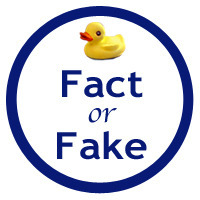 It’s Friday, and that means it’s time for your weekly fake-out. Here’s how it works: Two of the three following stories are true. One of them we made up. Can you guess which one is the fake? Pick your answer at the end of the article and see if you’re right.
It’s Friday, and that means it’s time for your weekly fake-out. Here’s how it works: Two of the three following stories are true. One of them we made up. Can you guess which one is the fake? Pick your answer at the end of the article and see if you’re right.
A.
Casey Jenkins, an Australian artist and self-proclaimed “craftivist” from Melbourne, Australia, has undertaken a 28-day performance called “Casting Off My Womb.” In the piece, she sits in front of an audience every day, knitting from a ball of yarn that she has inserted in her private parts. The goal of the piece is to take some of the fear out of women’s anatomy. “If you take a good hard look at a vulva, you realize it is just a bit of a body, there’s nothing that is shocking or scary, or you know, nothing’s going to run out and eat you up.” The piece continues through the artist’s entire 28-day cycle, though she at least starts with a new ball of yarn every day.
B.
Charles Rowan, 26, a cage fighter who had recently faked his own death, was recently sentenced for robbing a gun store named Guns and Stuff with a hammer. In the robbery, Rowan, whose mixed martial arts fighting name was “Freight Train,” beat the store’s owner with a hammer before stealing handguns. His girlfriend participated in the robbery, but stayed behind to call 911, claiming she was a witness and not a participant in the robbery. The news of his arrest is what tipped off to Rowan’s friends and family that he hadn’t died. The fake death—which included Rowan hiding and watching his own memorial service—had been orchestrated by Rowan and his girlfriend to evade an $80,000 debt to a drug dealer.
C.
Bradley Winters, a retired school bus driver, was arrested last week on charges of breaking and entering and grand larceny for breaking into a church in his Corpus Christi, Texas, neighborhood. He was caught at nearly 4 a.m. only a block from the church after neighbors called 911 having reported hearing strange sounds at St. Phillip the Apostle Church. The sounds turned out to be Winters lowering the church’s 400-pound brass bell from the steeple using a rigging system he had fashioned using nothing more than supplies he had borrowed from his son, an avid rock climber: synthetic climbing rope, tubular nylon webbing, and a $20 carabineer. The wheelbarrow came from his own garage. According to a neighbor, Winters had lived in the neighborhood for 25 years, and had been irritated by the church’s ringing bell for years.
Want more fakes? Check out Uncle John’s Fake Facts. (Really!)
December 12, 2013
True ‘True Blood’ Blood (For Real!)
Scientists have created artificial blood. This is not a plot point from True Blood.
 Researchers at Babes-Bolyai University in Cluj, Romania, spent months trying to develop an artificial human blood substitute. While this could be considered a medical miracle and a marvel of modern science, the best part about this is that Cluj is located in the Romanian region of…Transylvania.
Researchers at Babes-Bolyai University in Cluj, Romania, spent months trying to develop an artificial human blood substitute. While this could be considered a medical miracle and a marvel of modern science, the best part about this is that Cluj is located in the Romanian region of…Transylvania.
The secret ingredient of their artificial blood? Hemerythrin, a protein extract commonly found in sea worms. The faux-blood also contains salts and water along with albumin and a few other proteins for good measure. While it’s not even red (because it doesn’t contain hemoglobin), the stuff could one day help save countless lives.
The scientists are quick to point out that their current formula can’t completely replace blood. Instead, it encourages the regeneration of actual blood, which is just as good. Early tests involving lab mice have proven successful and they hope to begin human trials in another year or two.
If this wasn’t weird enough, they also theorize that the formula could be developed into an instant powder form that won’t require refrigeration. It would be usable at room temperature and might even be able to be stored without an expiration date. This version could be perfect for emergency workers or military medics that perform transfusions outside of hospitals. All they would need to do is add water to a pack of “Insta-Blood” (and maybe double check the label to make sure they’ve selected the one with the correct blood type).
Want more weird inventions? Check out Uncle John’s Bathroom Reader Weird Inventions.
More Quick Facts About Some More Christmas Movies
You watch them every year…but do you know everything there is to know about these classic holiday films? (Part 1 is here.)
 The Santa Clause. When this movie opened in November 1994, it opened at #1 at the box office. At the same time, Tim Allen starred in Home Improvement, the #1 TV series, and his book, Don’t Stand Too Close to a Naked Man, was at the top of the New York Times bestseller list. It’s the first, and so far only time, one person has simultaneously had the #1 movie, TV show, and book in the U.S.
The Santa Clause. When this movie opened in November 1994, it opened at #1 at the box office. At the same time, Tim Allen starred in Home Improvement, the #1 TV series, and his book, Don’t Stand Too Close to a Naked Man, was at the top of the New York Times bestseller list. It’s the first, and so far only time, one person has simultaneously had the #1 movie, TV show, and book in the U.S.
Miracle on 34th Street. The 1947 version is arguably the most acclaimed Christmas movie of all time. Edmund Gwenn won an Academy Award for his portrayal of Santa Claus, and the movie earned nominations for Best Screenplay and Best Picture—one of only three Christmas movies ever nominated for the top Oscar, along with It’s a Wonderful Life and The Bells of St. Mary’s. It was selected for preservation by the National Film Registry in 2005, and has landed on multiple “best films of all time” lists published by the American Film Institute. Almost everybody loves this movie. Except for the National Legion of Decency. A watchdog organization founded in 1933 by a group of Catholic bishops, this then-powerful group would release ratings for major films, based on their level of “decency.” It deemed Miracle on 34th Street, a family film about a little girl’s powerful belief in Santa Claus, as “morally objectionable in part” because Maureen O’Hara’s character was divorced.
Dr. Seuss’s How the Grinch Stole Christmas. Dr. Seuss consistently denied filmmakers the rights to make a live-action version of How the Grinch Stole Christmas, because he was happy with the 1966 animated TV special, which still airs annually. When he died in 1991, decisions about adaptations of his work fell to his widow, Audrey. She, too, denied filmmakers a live-action adaptation…but she did grant the Old Globe Theatre in San Diego the rights to a stage version. After witnessing the first production in 1998, Audrey Seuss relented, and gave Ron Howard the rights. Dr. Seuss’s How the Grinch Stole Christmas came out in 2000, and became the highest grossing film of the year. The stage version is an annual production in San Diego.
Home Alone. Since his death in 1977, international rock star (and Bathroom Reader favorite) Elvis Presley has been the subject of countless rumors and conspiracy theories alleging that he faked his death. Since then, people have spotted Elvis in grocery stores, casinos, hospitals…and in the 1990 blockbuster Home Alone. Carefully watch this clip—the bearded extra behind the woman in the white shirt is, according to some people, the King in disguise. (We think it’s just a young Santa.)



